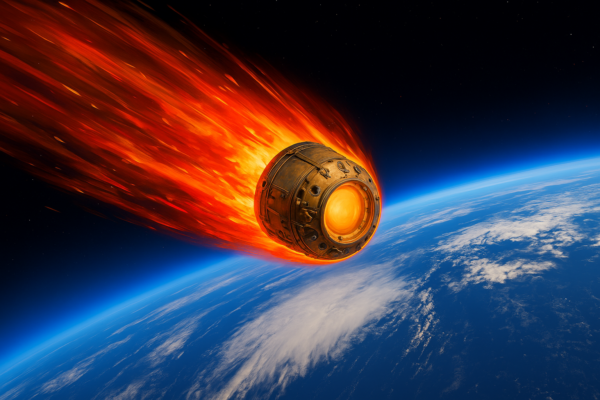Threatening Earth is not just asteroids. A Soviet-era out-of-control satellite is expected to crash back to Earth next week, causing space experts to worry that this colossal object may hit somewhere, potentially causing casualties.
English-American astronomer Jonathan McDowell warned in his blog that the Kosmos 482 probe “likely remains intact while passing through Earth’s atmosphere and impacting the ground,” indicating that the “probability of hitting a person is about one in several thousand.”
Launched by the Soviet Union in March 1972, this satellite was originally designed for a Venus exploration mission to collect data on Venus’ surface. Due to an upper-stage rocket failure, however, Kosmos 482 failed to gain enough speed to escape Earth’s gravity, instead becoming trapped in an elliptical orbit around Earth, completely lost.
This defunct space equipment is about the size of a car and is expected to re-enter Earth’s atmosphere between May 7 and 13 (may vary a few days before and after).
Dutch space situational awareness lecturer Marco Langbroek was one of the first experts to discover that this satellite is about to return to Earth. He pointed out that Kosmos 482 was originally designed to withstand the extreme atmospheric conditions of Venus, hence it is also possible to “safely pass through Earth’s atmosphere intact and physically impact the ground.” He also simulated the re-entry process, predicting that the impact speed will exceed 145 miles per hour (about 240 kilometers per hour), like “a car falling from the sky at a speed of 100 to 200 miles per hour.”
Despite this, Langbroek emphasizes that the overall risk is low. He stated, “The risk of a severe impact is not particularly high, but it’s not zero.” McDowell also added that although this “dense but inert” space debris will indeed re-enter Earth, since most areas of Earth are uninhabited, the “probability of hitting someone when crashing at a random location is about one in ten thousand, and to hit you directly, the probability is even lower at one in a hundred billion.”
As for the potential crash site, experts speculate that it may land between 52 degrees north latitude and 52 degrees south latitude, covering the mid-low latitude regions of Europe, Asia, Americas, Africa, and Australia, “although it is most likely to fall into the ocean, just like the failed 2011 Venus exploration mission — Phobos-Grunt that ultimately fell into the Pacific.”
Kosmos 482 was originally part of the Venera Venus exploration program, and its sister craft, Venera 8, successfully landed on Venus in July of the same year. Venera 8 transmitted data from the Venusian surface for 50 minutes before melting due to the high temperatures. After the failure, Kosmos 482 split into the main body and descent module, with the main body burning up in the atmosphere in 1981, while the descent module continued to orbit Earth until now, expected to conclude its over 50-year journey soon.
Experts are continuing to track the trajectory of this object’s descent, and in the coming days, they will have a clearer picture of its re-entry situation.

